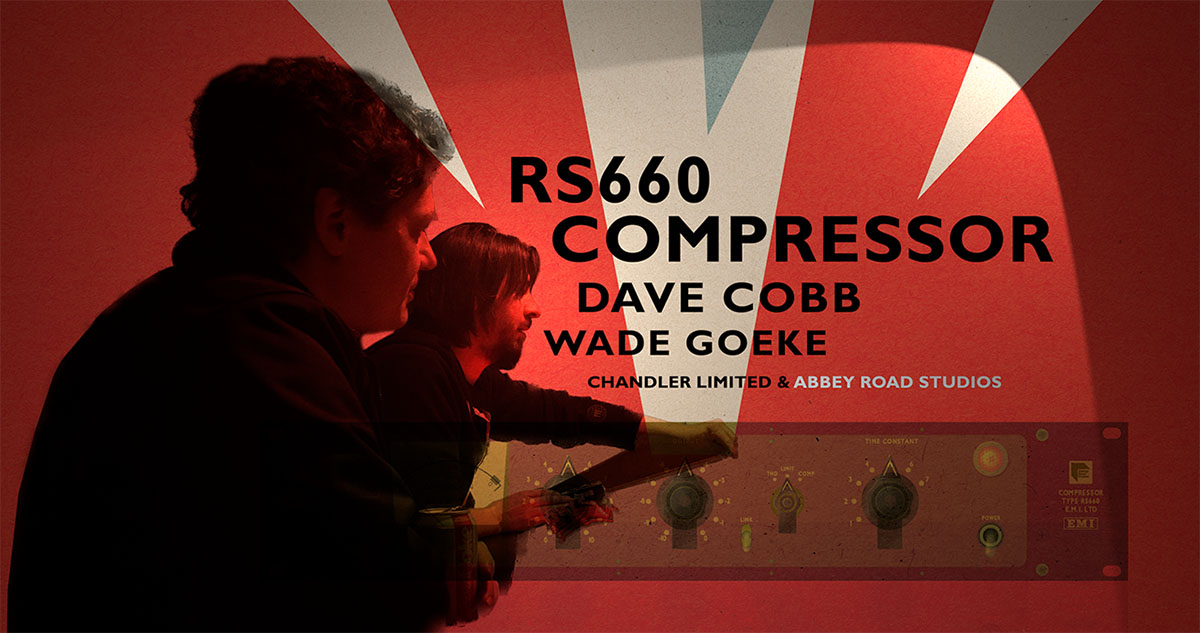Chandler Germanium Compressor
by: Paul Vnuk Jr.
Recording Magazine, March 2008.
In our October 2007 issue we reviewed the Germanium Tone Control equalizer from Iowa’s Chandler Ltd. This month we look at Chandler’s Germanium Compressor – another device in that Germanium product line (that also includes a preamp).
First let us revisit the description we used in October.
Once again – what is Germanium?
Number 32 on the periodic table, Germanium is a grayish-white semi-metallic element, used prevalently in early transistor designs of the 1950s as some of the first alternatives to valves (tubes). Germanium transistors were used in early solid state gear designs by Telefunken, Neve, Fairfield, EMI and more; however its use was short lived and quickly suspended by cheaper and more stable silicon transistors.
Germanium-laced gear is known to have a sonic girth and warmth that also achieves a nice harmonic distortion (which made it a favorite of early guitar pedal designers).
The Germanium Compressor
The Germanium Compressor, lovingly called the “Germ Comp” by Chandler, is a single channel, FET-based compressor that adds a Germanium drive circuit like those of the mic pre and equalizer, and while this sounds simple, just wait…
It retains the look and feel of the series with bold blue faceplate and vintage yellow chicken-head knobs, and comes in the same quality housing. As with all Chandler units, the Germanium Compressor requires the external PSU-1 MKII power supply. Many dealers bundle the two together, and one PSU-1 will power up to two Chandler devices.
Front to back
The front panel layout begins on the left with a hardwired bypass switch. Next, and mounted externally on the faceplate, is a unique VU meter with a retro-plastic housing looking like it was stolen off of some obscure 1920s test equipment. It is permanently set to show gain reduction, and is backlit in glowing blue.
To the right of the meter is a Clean/Dirty (more about that below) compression switch followed by the five chicken-head controls for Input, Side chain, Ratio, Comp curve, and Wet/Dry mix. Following these is a pair of smaller knobs for setting Attack and Release times, and last are the Germ Drive and Feedback knobs present on all of the Germanium products. Connections on the rear of the unit include balanced XLR ins and outs, a balanced ¼” jack for stereo linking of two units, and the standard XLR-style AC jack for connecting to the PSU-1 MKII.
Concepts and functions
This is a FET design (think 1176LN) design with an interesting and unique feature set.
First let’s look at the Dirty/Clean switch. While most manufacturers try to lower and remove the THD (total harmonic distortion) typically found in FET-based designs, the Germ Comp’s designers included a switch which reintroduces second-and third-order harmonics into the signal path, thus allowing for a thicker, grittier sound (similar to that of the Empirical Labs Disteressor).
Now by “harmonic distortion” I do not mean “distortion pedal” – the sound is still very clean and hi-fi, just slightly more smeared and dense. According to the manual the THD in clean mode is 0.2 – 0.5% and in Dirty mode it is 2 – 5%.
As with most FET designs, the more it is pushed, the more the input on the Germ Comp directly affects the amount of applied compression. By design, the compression gets tighter in the 8 to 10 range. On the prototype units it was still labeled Threshold and acts similarly.
Side Chain Filter
The Side Chain section has a control for a variable filter to adjust the low end as the signal as the signal hits the compressor’s detector. This allows for control of low-end signals to prevent excessive clamping down on bass-heavy content.
While internal side chaining is not a new feature in compressors, most units typically have a one or two frequency, on / off option. The Germ Comp offers settings for Out, 30, 60, 90, 150 and 300 Hz; think of it as a “high pass filter” for compression.
Ratios? What Ratios?
On most compressors exact compression ratios are chosen for you, i.e., 4.1, 8.1 and so on. The Germ Comp’s ratios were chosen and “tuned” by ear. While the knob goes to (ahem) eleven, and the manual hints at a minimum of 1.5:1 to a “very good squash” of about 10.1, Chandler’s website states, “we did not do the math”, but rather they listened and chose settings that sounded good in the real world. And more than anything, the ratios work hand-in-glove with the Comp Curve (knee) control.
Throwing another curve
When it comes to curves, most hardware compressors typically offer a choice of hard or soft (often called knee). The Germ Comp features six: R Soft (resistance), Germ Soft, Germ Med, Silicon Med, Silicon Hard, and Zener Hard. As the names imply each curve makes use not only of different “knee settings”, but also different sets and numbers of resistance diodes: Germanium, Silicon and Zener (yes like the EMI unit of the same name). This not only alters the compression curve, but also tonal and reactionary characteristics as well.
These curve choices, in conjunction with the ratio settings, are one of the key features of this unit and the manual does a great job of both detailed explanation and suggestions for use; you can download it at www.chandlerlimited.com for a closer look.
Wet or dry? Fast or slow? Shaken or stirred?
The next feature is also unique to this unit and possibly the first time it has ever been offered in a compressor: a Wet/Dry mix control. Like those found on a reverb or delay unit, this knob allows you to dial the dry signal back into the compressed signal. With this feature you can achieve parallel compression in one box! Mixing a dry and compressed signal has been popular mixing tricks for years, especially on drums, but this time it does not waste a mixer buss.
As you would expect, the attack and release knobs live up to their names, but if you want numbers, Chandler again claims them to be “ear tuned through listening and experimentation”. They can be extremely quick and grabby or smooth and sloooowwww… how’s that for technical?
To link or not to link
Lastly, two or more units can be used for stereo or surround (connect a balanced ¼” TRS cable between the two units’ rear-panel jacks). When the Link control is engaged, the control voltage will control threshold, attack, and release, while the other functions need to be set manually.
Germs!
And then, of course, there’s the now-famous Germanium drive section. It is this section that gives each unit in the Germanium line its distinct, vintage sound. By altering the gain to feedback ratios, varied amounts of cleanliness or sonic thickness are possible.
In use and practice, practice practice
Let me start off by saying that this unit is unlike any compressor you (or I) have ever used! A bold claim, I know, and while it certainly does all the things you would expect a compressor to do right out of the box, like squish, squash and tame, it is capable of much more. I spent a few months with a pair of these beasts and I am still getting the hang of what they are capable of.
I had certain expectations that they would work well on sources like electric guitar, bass and drums (kick, snare and overheads), since these had done well with the Germanium EQ unit reviewed earlier, and I was not disappointed. I loved doing parallel drum buss compression on the fly in one box.
In use they are a tad grabbier than my 1176 reissue and can be even squashier than my vintage dbx unit when pushed to full-on Zener mode. On vocals, when used like a traditional compressor (full wet), I still preferred my 1176 for peak control and tone, but when used with the Mix knob, either by itself or better yet in addition to the 1176, the Germ Comp gave the voice an added presence that pushed the vocals forward, without ever being heavy-handed. It was similar to the “louder, fuller” effect you get when copying, pasting, and doubling up channels in a DAW (compressed or otherwise).
Surprises
Then there were the sources I was not expecting the Germ Comp to be good on, like finger-picked acoustic guitar, violin, and stereo choral vocals, in other words delicate sources. This is where the practice and learning curve comes in.
While this unit can literally squash a signal flat, it is in the more subtle resistance and germ modes where this piece shines. With varying combinations of input, side chain, ratio, curve and wet/dry mix, you can subtly compress and highlight these signals while retaining their dynamics.
If by now you gather that there are a lot of settings to play with for maximum results, you are right, there are! This is not a unit for compression newby or faint of heart. It can do a lot, but it requires a good level of study and patience.
On quiet signals I did find it necessary to push the drive and feedback levels much more than on the Tone Control or Pre units to achieve an equal or louder level.
Thanks to its softer comp curves and mix control, the Germ Comp does very well on the master buss. The Germ Comp can glue your mix together and then blend the dynamics back in to taste.
Last observations
For my way of working, I found the Germ Comp to be a better mixing tool than a tracking tool, where my trusty 1176 is better suited to typical limiting and gain riding.
This may be due to the fact that the Germ’s input is quite touchy and slight movements yield big changes, especially on the higher comp curves, but other than that, and despite the learning curve, these were a joy to play with.
Conclusion
I won’t lie – the Germanium Compressor is a serious investment, not only of cash, but also time… a serious investment that also yields serious sonic rewards.
This unit has ultimately expanded the compressor paradigm and I will be watching to see how many of these features, especially the mix control, start making there way into future compressor designs, by Chandler and by others.
The Germanium Compressor’s vintage tone and clarity live up to its pedigree, and like the Chandler Germanium WQ before it, will challenge you to stop at owning only one.
—Paul Vnuk Jr.
Paul Vnuk Jr. (vnuk@recordingmag.com) is a recording engineer, producer, sound designer, and musician, living and working in Milwaukee.






